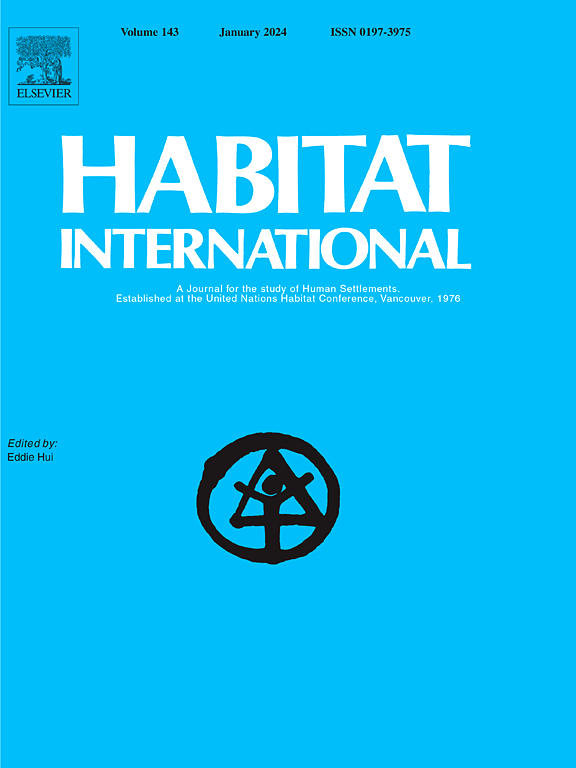What drives evolved commercialization and transformation of residential into mixed-use neighbourhoods?
IF 7
1区 经济学
Q1 DEVELOPMENT STUDIES
引用次数: 0
Abstract
This study investigates the organic transformation of residential areas into mixed-use neighbourhoods through evolved commercialization, with a focus on customer attraction dynamics. While mixed-use development has been extensively studied, the factors driving incremental commercialization and its relationship with mixed-use formation remain underexplored, particularly in the context of developing cities. This research focuses on examining how commercial typology, clustering, local mixedness, and connectivity contribute to customer attraction and the broader evolution of mixed-use environments. The study employs a mixed-methods approach, combining survey-based data and spatial analysis from sixteen selected mixed-use streets in different zones of Delhi, India. Using ordinal logistic regression, it identifies significant factors influencing customer attraction, such as store size, operational hours, clustering of businesses and informal activities and level of mixedness between storekeeper's place of trade and residence. It further highlights the role of connectivity and accessibility metrics, in context of enhanced walkability and driving customer attraction. This study fills a critical gap by offering empirical insights in understanding the interaction between evolved commercialization and evolution of mixed-use neighbourhoods, particularly in the Global South, where organic transformations are prevalent.
是什么推动了住宅向混合用途社区的商业化和转型?
本研究探讨了通过演变的商业化将住宅区有机转变为混合用途社区,重点关注客户吸引力动态。虽然混合用途开发已被广泛研究,但推动渐进式商业化的因素及其与混合用途形成的关系仍未得到充分探讨,特别是在发展中城市的背景下。本研究的重点是考察商业类型、集群、本地混合性和连通性如何对客户吸引力和混合使用环境的更广泛演变做出贡献。该研究采用了混合方法,结合了来自印度德里不同区域的16条混合用途街道的调查数据和空间分析。使用有序逻辑回归,它确定了影响顾客吸引力的重要因素,如商店规模、营业时间、企业和非正式活动的聚集以及店主的贸易地点和居住地之间的混合程度。它进一步强调了连通性和可达性指标在增强步行性和提高客户吸引力方面的作用。本研究填补了一个关键的空白,通过提供经验见解来理解不断发展的商业化与混合用途社区的演变之间的相互作用,特别是在有机转型盛行的全球南方。
本文章由计算机程序翻译,如有差异,请以英文原文为准。
求助全文
约1分钟内获得全文
求助全文
来源期刊

Habitat International
Multiple-
CiteScore
10.50
自引率
10.30%
发文量
151
审稿时长
38 days
期刊介绍:
Habitat International is dedicated to the study of urban and rural human settlements: their planning, design, production and management. Its main focus is on urbanisation in its broadest sense in the developing world. However, increasingly the interrelationships and linkages between cities and towns in the developing and developed worlds are becoming apparent and solutions to the problems that result are urgently required. The economic, social, technological and political systems of the world are intertwined and changes in one region almost always affect other regions.
 求助内容:
求助内容: 应助结果提醒方式:
应助结果提醒方式:


